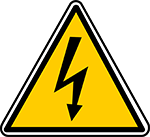Troubleshoot

To troubleshoot is solving a problem or determining a problem to an issue. Troubleshooting often involves the process of elimination, where a technician follows a set of steps to determine the problem or resolve the problem.
Computer troubleshooting overview
Below is a brief overview of the basics of troubleshooting a computer problem. Anyone can follow these steps to help identify or solve most computer problems.
Is the computer turning on?
If the computer or display is not turning on, you can quickly determine that the computer has a connection or other hardware issue. Follow either of the links below for steps in troubleshooting these problems.
Any error messages?
If you're getting any error messages, write down the error and search for that error message. Computer Hope and millions of other Internet sites have documents relating to error messages with steps to fix them.
Check Task Manager
If you're using Microsoft Windows, check the Task Manager to see if any program is not responding or has other errors. If you're having problems opening a program, ensure Task Manager does not show the program as already running. If there are problems or versions of the program already running, End Task those processes.
Reboot the computer
If the computer is acting strange, frozen, or encountering errors and can boot, reboot the computer. Often, rebooting the computer can solve many computer issues. We highly recommend not doing the steps below until the computer is rebooted.
Has any new hardware or software been added?
If any new hardware devices were connected to the computer or new software was installed, it may be causing your problem. Try removing the hardware, uninstall the program, and then reboot your computer. If the problem goes away, that's a strong sign that the new hardware/software was causing the problem.
Has the computer moved?
If your desktop computer was moved recently, something might have come loose inside the computer. A cable might be loose, or modular hardware such as your RAM (random-access memory) or GPU (graphics processing unit) may need to be reseated.
You can open your computer case to inspect your hardware for any loose connections. Before touching the hardware inside your computer, always ensure the computer is properly powered off and that you are physically grounded. Grounding yourself ensures that electrostatic discharge does not travel from your fingers to your hardware and damage the circuitry.
Have there been any power outages or electrical storms?

A computer not running on a UPS (uninterruptible power supply) may improperly turn off during a power outage or brownout. When a computer is improperly shut down, data corruption, and in some cases, hardware failure can occur.
If the computer is not connected to a surge protector, a power surge may have caused damage to the hardware in the computer. This damage is especially likely if your local area has recently experienced electrical storms or power outages.
Reconnect and check power cords

If the computer is not getting enough power or the power is getting interrupted, the computer can encounter problems. Disconnect your power cables from any power strip or UPS and connect the computer directly to a known good wall outlet.
Is it a hardware or software issue?
When troubleshooting, it's important to identify if the problem you're encountering is caused by hardware or software. By identifying what's causing the issue, you'll better understand the direction of steps to follow.
Update drivers or the install latest patches
Hardware manufacturers frequently release updated device drivers and firmware to keep their hardware compatible with technology changes. If you're encountering a hardware issue, make sure that the latest drivers for that device are installed.
Similarly, your operating system and the software installed on your computer may also have an available patch that might resolve any problems you are having. Make sure your OS (operating system) and software are up-to-date.
Scan for malware and viruses
Computer viruses and malware can cause various problems, from system slowness to the inability to start the operating system.
It's very common for people to assume that a computer problem is a virus. However, it's more common for there to be another software problem and not malware.
When was the computer last running with no problems?
If the computer has worked in the past and you're running Microsoft Windows, consider running a Windows system restore to restore the computer to an earlier date. The system restore does not erase any data and returns settings to how they were on an earlier date.
Other computer hardware and software troubleshooting
Below are more specific troubleshooting steps related to specific computer hardware and software.
Hardware related troubleshooting
- Why won't my computer turn on?
- My laptop computer screen is black.
- No display or black screen on a computer monitor.
- Why don't any keys on my keyboard work?
- Why is my laptop mouse touchpad not working?
- Mouse is not detected or working in Windows.
- How to troubleshoot printer issues.
- Why do my computer speakers not work?
- How to fix missing or lost sound in Windows.
- How to troubleshoot microphone issues.
- Why is my Wi-Fi not working?
- Basic network troubleshooting.
- How to test a computer motherboard and CPU for failures.
- How to test computer memory to determine if it's bad.
- How to test a hard drive for failures.
- General scanner troubleshooting.
- CD-ROM is getting power but does not work.
- How to troubleshoot floppy disk drive issues.
Software related troubleshooting
- No display or black screen on a computer monitor.
- Basic software troubleshooting.
- Basic computer game troubleshooting.
What to do if troubleshooting doesn't help?
The goal of troubleshooting is to isolate the problem by eliminating the possible problems one at a time. If you've tried the above steps and are still unsure what the problem is, get the issue evaluated by an expert.
Action center, Problem, Repair, Technical support, Technician, Tools, Workaround
